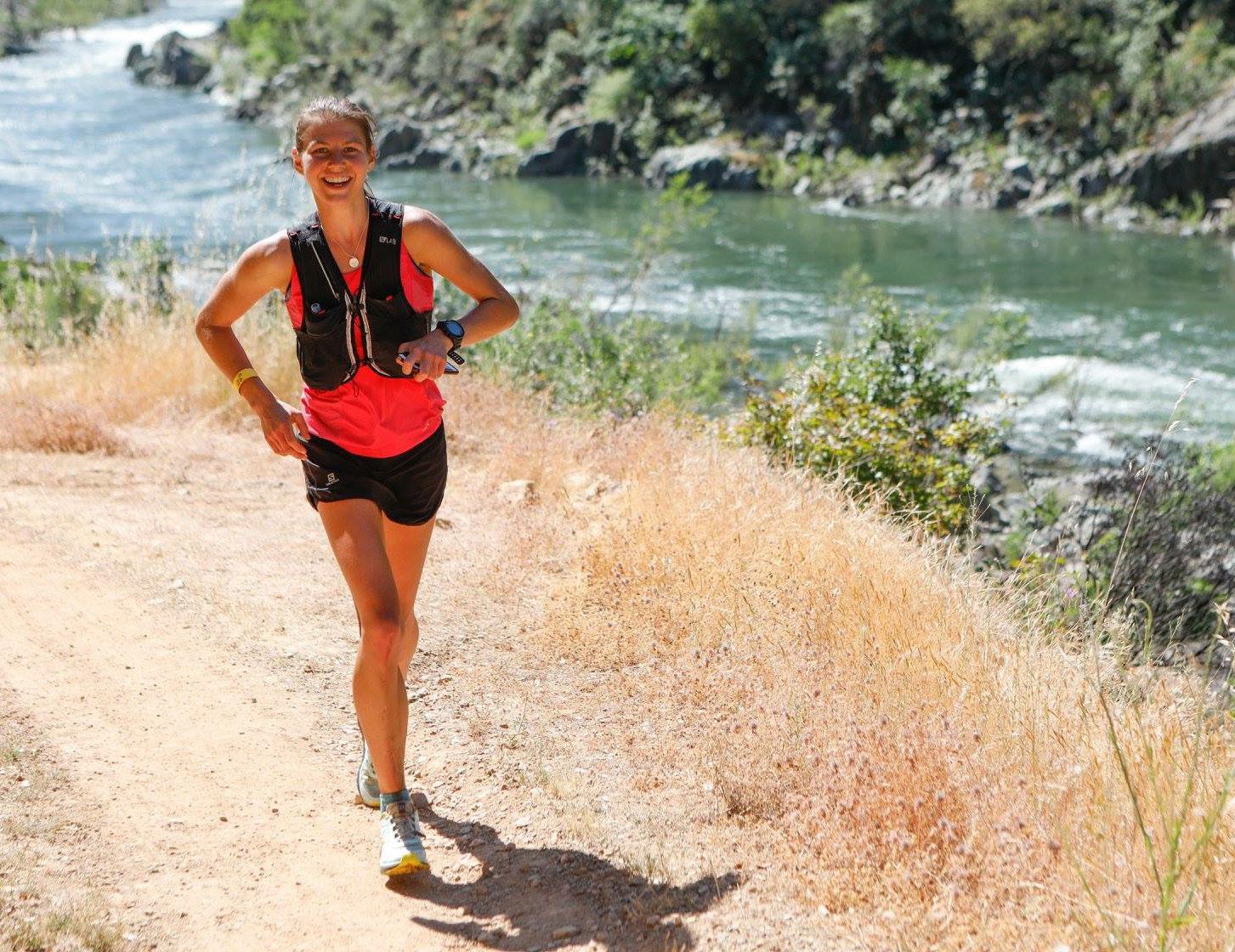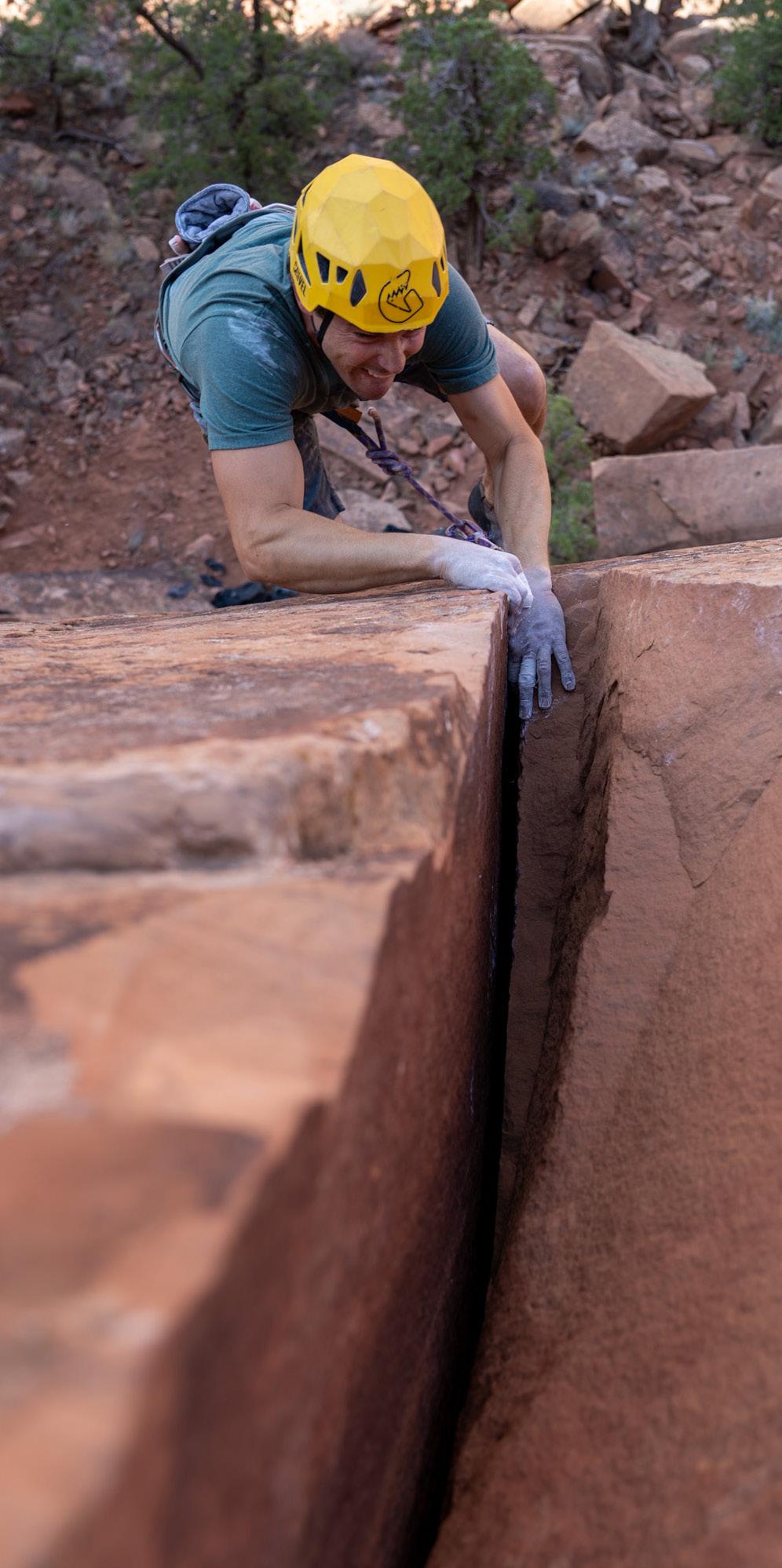
6 minute read
ENDLESS BUMMER
Athletes find a way to escape the woes of winter
BY MORGAN SJOGREN
The space between summer and winter often feels like a blink. One day, I am frolicking in the high country of the San Juan Mountains in shorts — and long before I am ready, these same trails require skis for passage. The taste of this switch arrived earlier this September, in the form of a smoky, sweltering 95-degree day followed by temperatures in the 30s and thunder snow. What followed was an immediate morale dip into despair. Sure, the temperature quickly warmed up again, but I tasted the all too familiar reminder that winter is coming.
I grew up in the southern California desert where the seasons fluctuate between warm, hot and less hot. Through nearly a decade of living in high altitude communities in the intermountain west, I have found ways to find joy in colder temps by running in snow with microspikes and dabbling in skiing. Yet, I am finally coming to grips with the fact that I am still not a winter person. My idea of a perfect afternoon is running on a dry trail and then literally laying on a slab of sun-baked sandstone like a lizard. The truth is, the winter activities I’ve adopted are actually self-prescribed medication to prevent seasonal affective disorder (SAD) to make it through what I am starting to consider the annual endless bummer.
Of course, I am not alone. For many mountain athletes who flock to the slopes for summer sports, the novelty and beauty of winter can eventually wear off — and wear you down. For those of us that love summer, the first hints of winter like browning foliage in the high country and crisp mornings in the desert can signal more apprehension than joy. If you’re not the type to start waxing your skis as soon as monsoon season ends, you may already be bracing yourself for another round of SAD or simply trying to stay in shape when the snow falls.
To sustain an adventurous mountain life, it therefore becomes necessary to admit and accept your warmblooded inclination, and then make necessary adaptations. Misery also loves company, so if you start to feel like the only person dreading the winter solstice, lean into the experience and expertise of these Southwest athletes who are doing the best they can to get through their least favorite season. ››
In the winter months, Elizabeth Sampey escapes to the Arizona desert with her mountain bike. photo by Whitton Feer/ Revel Bikes

CAT BRADLEY, ULTRARUNNER
For Western States 100-Mile Endurance Race champion Cat Bradley, living and training in the Colorado Rockies is a world apart from growing up on the island of Hawaii, and she says this directly correlates with her winter struggles.
“I am actually hoping to move back to Hawaii one day, and maybe even staying with family this winter,” Bradley said. “I miss the ocean and the ability to get out the door for 30 minutes of surfing or open water swimming.”
Aside from the cooler temperatures, Bradley also acknowledges another winter challenge: Gear.
“I have come to realize that a huge part of my struggle with cold weather and cold weather sports is the gear involved,” she said. “I do love skiing, and the novelty of being a ski bum is what brought me to Colorado. But every year the layers of clothing and the additional prep time deters me. I have gone from skiing 100 days a year to less than ten.”
Bradley cautions runners and hikers who yearn to hang onto their hard earned fitness during the colder months.

Ultrarunner Cat Bradley in her element. photo by Ryan Lassen
“I have avoided trails in the winter because I noticed microspikes change my form and I would tend to have more niggle pop up when using them consistently,” she said.
While Bradley plans to escape to warmer weather this season, she mentions that if she were to stick it out through the colder months, she wouldn’t force her training as she has done in the past.
“My plan would be to drastically reduce mileage until the spring to stay healthy and inspired,” Bradley said. “It is easy to get burned out and injured before the running season even starts when trying to force mileage on icy roads and in blowing winds!”
ELIZABETH SAMPEY, MOUNTAIN BIKE ADVENTURER
The amount of gear to sustain winter life and adventures only increase for athletes living on the road. Mountain bike and packraft adventurer Elizabeth Sampey, who also works as a physical therapist, is honest about the challenges of facing the winter elements head-on while living full-time in her van.
“It’s definitely harder to motivate for my adventures when it starts to get cold and wet,” Sampey said. “The in-between mud season is the worst as I have nowhere to dry muddy wet clothes after a ride, or no hot shower to get warm, but it’s not quite cold enough to run my propane heater. So sometimes I just huddle under blankets and eat hot ramen with my dog and shiver, stupidly. When that starts happening it usually motivates me to head elsewhere.”
Admittedly, before COVID-19 Sampey would frequently leave the country to avoid winter altogether. But before Sampey flocks south, she gives winter her best shot.
“I actually do love backcountry skiing; so when the faucets turn on midwinter and it dumps snow in one of my favorite spots, I’ll head there and park at some backcountry trailhead with enough food and propane to last a week,” she said. “Then I’ll ski my butt off, go into town for a resupply, and look for the next spot.
Sampey does this for about a month or so until she feels that she’s gotten her fill of skiing, then heads back to her favorite place in the country: the Sonoran Desert south of Tucson, Arizona. Sampey spends her time ducking in and out of Mexico as well, and riding her bike until it gets warm enough to head north again — usually in late April or May.
LUKE MEHALL, ROCK CLIMBER
For years, Luke Mehall lived in Gunnison, Colorado, where he dreaded the long cold winters.
“I would get SAD when I lived there,” Mehall said.
Now based in Durango, Colorado, he’s actually finding joy during the winter months. “Believe it or not, winter in Durango can actually provide some good climbing conditions outside,” he said.
To manage SAD, Mehall uses a simple remedy: “I just make sure that I get outside and get some sunshine and get some cardio every day.”
However, to cope with the wetter days, Mehall has shifted his winter training focus.
“I just started indoor training more for climbing in the winter this past year, at 41 years old,” Mehall said. “And I really enjoyed it.”
Though he doesn’t plan to escape winter other than with some local travel, Mehall is excited to focus on his new passion for indoor training to get through the coming months.
“(My fiancé and I) are currently scheming on building an indoor climbing wall at our house too, so that should be fun!”
With a few tweaks in mindset, activities and expectations, the endless bummer in the Southwest just might start to feel like the endless opportunity. To reframe perspectives of winter, try something new and have some fun.
MORGAN SJOGREN runs wild with words all over the Southwest. She has a penchant for chasing sunshine, and her motto heading into winter is, “It’s always summer on the inside.” Sjogren is the author of three books. Read more of her stories at www.therunningbum.com.
Rock climber Luke Mehall’s secret to combating seasonal affective disorder (SAD) is to get outside and enjoy the sunshine when possible. photo by Dane Molinaro











